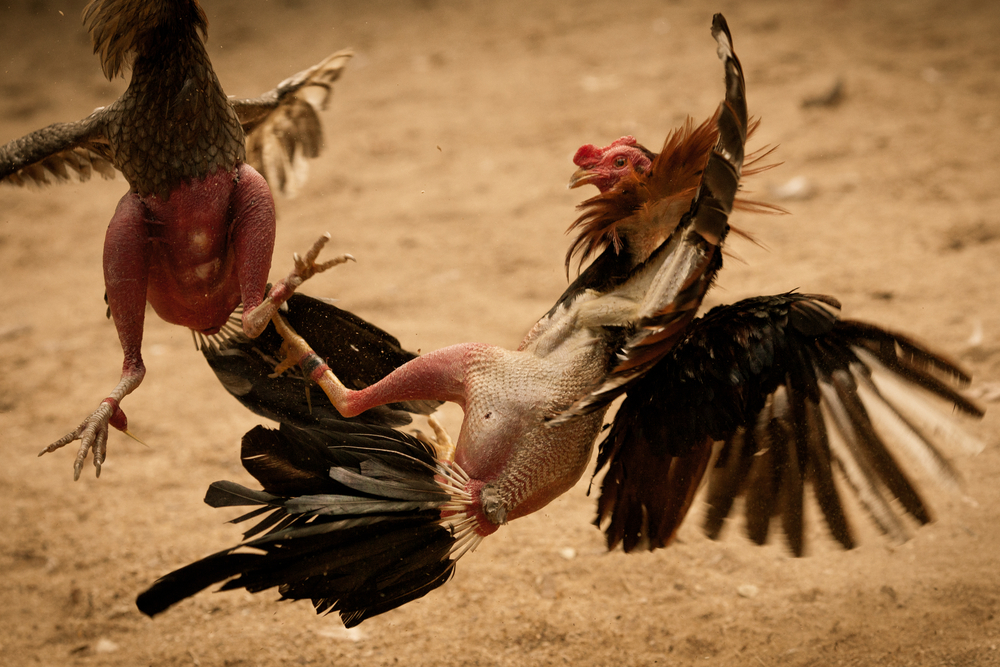
Cock fighting is a activity that has drawn both interest and debate throughout the ages. This old sport involves roosters being matched against one another in a intentional display of power and strategy, where the instincts of these creatures are released in a confined arena. For many fans, cockfighting represents not just a contest but a deep-rooted cultural tradition that emphasizes the bond between the roosters and their trainers. The thrill of watching two cocks engage in combat captivates spectators, while the detailed training and preparation involved reveal a realm of dedication and care.
Beyond its amusement value, cockfighting raises significant questions about animal welfare, morality, and legality. As societies evolve, the views on such activities are continually shifting, inducing discussions about the line between entertainment and cruelty. However, supporters argue that these events showcase the extraordinary abilities of roosters, who are bred specifically for fighting. As we delve deeper into the realm of cockfighting, it becomes evident that it is a complicated interplay of power, tactics, and survival, offering a unique insight into both human and animal behavior.
Chronicle of Cockfighting
Fighting cocks has a extensive and rich history, tracing back thousands of years to ancient civilizations. It is believed that this brutal sport began in Southeast Asia and spread to various parts of the Earth, including Greece and Rome. In early times, cocks were viewed as emblems of might and courage, and they were often matched up against one another as a trial of not just the birds but also their handlers’ competencies and tactics. The activity quickly gained favor among the privileged, who viewed it as a exciting spectator activity.
As the fight of roosters traveled through different cultures, it evolved and adapted to various societal norms and values. In ancient Rome, for instance, it was a part of the shows in stadiums, akin to gladiator battles. The birds used in these fights were selectively bred for might and aggression, leading to the creation of distinct breeds designed for battles. The practice became entangled with cultural rituals and even faith-based practices, solidifying its place in the chronicles of human amusement.
In the current era, the sport of cockfighting continues in various regions, particularly in parts of Latin America, Asia, and the Caribbean islands. It has mobilized local communities, wherein supporters come together to view and participate in events that celebrate their tradition and affection for the sport. However, the legality and morality of the sport have come under scrutiny, leading to fierce discussions over its place in contemporary society. In spite of these disputes, the tradition remains alive, demonstrating the intricate relationship between people and animals throughout history.
The Role of Breeding Practices and Training
Genetic selection and training are crucial elements that determine the success of a fighter in cockfighting. Those who breed focus on heredity to produce birds with desirable traits such as strength, agility, and resilience. By selectively mating roosters that display these qualities, they aim to boost the ability of their offspring. Good breeding practices can lead to the creation of champions, as the bloodline plays a crucial role in a bird’s ability to compete.
Preparation is just as important in getting ready a rooster for the fight. Effective training regimens include fitness training, interaction with others, and mental stimulation. Handlers often use various approaches to get used to their roosters to the noises and sights of the ring, ensuring that the roosters remain composed under pressure. Regular sparring with other trained birds helps enhance the necessary skills to outsmart opponents during competitions.
Furthermore, a handler’s understanding of their bird’s personality and approach can influence practice outcomes. Some birds may perform well through offensive play and attacking strategies, while others may benefit from a more defensive strategy. A proficient trainer modifies their methods based on the unique characteristics of each rooster, optimizing the likelihood of success in the arena. Through dedicated breeding and tailored training, fighters enhance the chances of winning in this ancient and challenging sport.
Lawful and Ethical Issues
The practice of cockfighting has a controversial position in the community, encompassed by a complex web of juridical and moral implications. In numerous areas, cockfighting is considered illegal, with laws that differ widely across various locales. Certain nations and states have enacted strict animal welfare laws that prohibit any form of animal fighting, categorizing it as animal cruelty. Conversely, there are regions where cockfighting is still allowed under controlled circumstances, often seen as a cultural tradition. This contrast raises questions about the application of law in relation to societal values.
The ethical considerations surrounding cockfighting encompass issues of animal welfare and cultural traditions. Advocates against the practice argue that it inherently subjects birds to violence, trauma, and suffering, challenging the ethical basis of using creatures for entertainment. On the other hand, proponents often claim that cockfighting is a deep-rooted cultural practice that fosters community and cultural identity. The ongoing debate highlights the tension between animal rights and cultural heritage, prompting discussions on how communities regard and care for creatures.
As recognition of issues concerning animal welfare continues to grow, many organizations advocate for the abolition of cockfighting and encourage other options that respect both traditions and the humane treatment of creatures. This shift in public perception may result in more strict laws against animal fighting, but it also opens a conversation about finding a balance between tradition and humane treatment. The prospects of cockfighting remains ambiguous as laws evolve and ethical standards continue to be assessed.
RR88